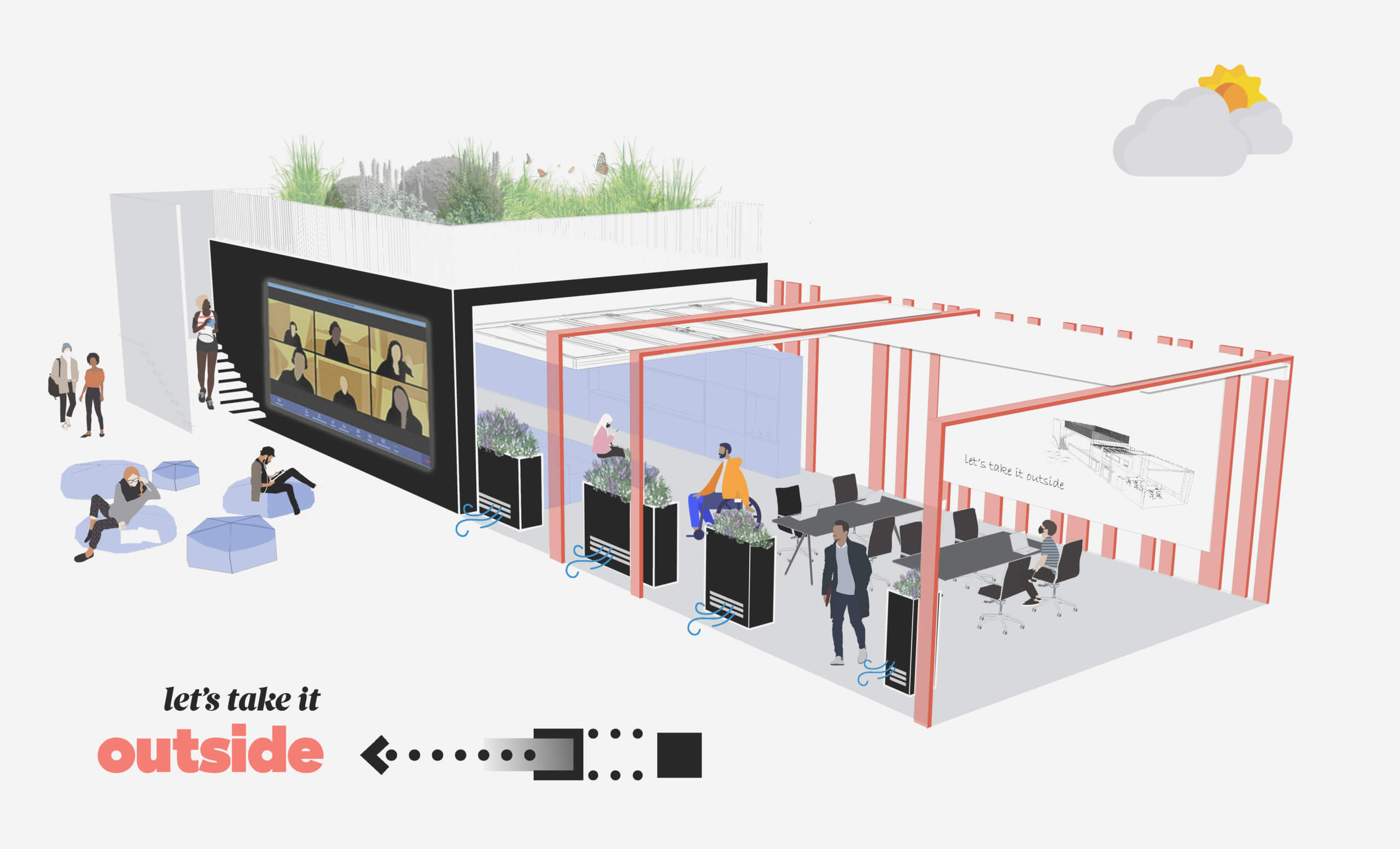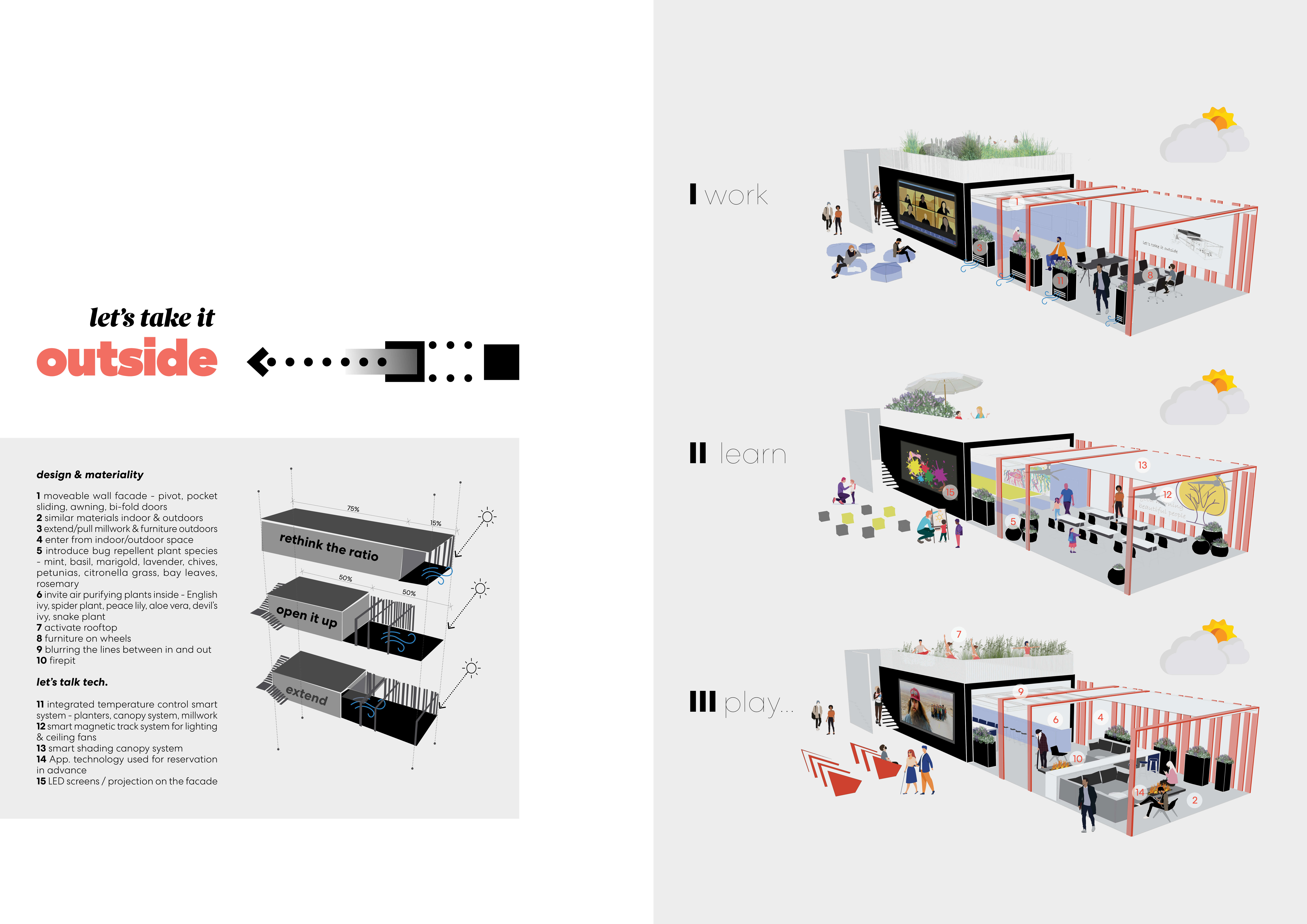At the beginning of the pandemic, I began walking an hour every morning to regain some normalcy and enjoy the outdoors despite the mandated confinement. On these walks, I’d pass a house with a covered porch. Seated there was a man working on his laptop and taking calls. Covered by the extension of the roof, he embraced his new workplace every day, rain or shine. Then, I’d pass a woman sitting in an outdoor shed in the backyard, doors open to reveal a height-adjustable desk, task chair, desk lamp, and a coffee machine.
And further along, at the local coffee shop, I’d frequently notice a large queue circled around the building. The owners had placed a mobile shipping container in the middle of the parking lot, creating a walk-up coffee kiosk that addressed ventilation concerns while providing a new outdoor experience for their loyal customers. As a designer observing these resourceful transformations all around me, I couldn’t help but wonder how we might develop more open-air spaces to meet the current moment while enhancing workplace, learning, retail, and dining experiences. A team of designers in our Los Angeles studio endeavored to find out.
First we wanted to understand our innate desire for outdoor settings. A core reason why we crave sunlight? Exposure to plants, natural light, and outdoor air has been proven to improve our physical and mental well-being. The body’s exposure to sunlight has a direct impact on serotonin production—that is, the mood-boosting chemical responsible for signaling feelings of happiness and well-being to the brain. Further, sunlight stimulates the body’s natural production of vitamin D. So, spending time in the sunshine—even if you’re indoors—helps your body produce the amount of vitamin D it needs to work properly.
Another factor at play are circadian rhythms, those biological, mental, and behavioral changes that follow a 24-hour cycle and respond to light and darkness within our environments. Circadian rhythms are produced by natural factors within the body, but they are mostly affected by signals from the environment—light being the primary cue. Exposure to light turns the genes that control our internal clocks “on” and “off.” Circadian rhythms dictate sleep-wake cycles, hormone release, body temperature, and other important bodily functions.

